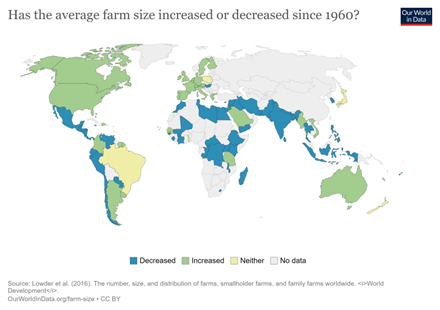



Diversify: making more money per acre with added diversity
Travis Meteer describes trends and pros and cons of diversified ag operationsDuring the COVID-19 pandemic, many grocery stores faced food shortages and struggled to support their customers. As a result, consumers have become more interested in local markets and understanding where their food comes from. This interest has contributed to a trend of producing one’s own food on a diversified crop and livestock farm rather than relying on commercial production.
Travis Meteer, Beef Extension Educator for the University of Illinois Urbana-Champaign, gives a US perspective of trends he’s seeing with diversified crop and livestock operations.
Meteer describes a diversified operation as “a farm that incorporates livestock and crops on the land.” For example, this could include a farm with one or more species of livestock with a specialty crop or a farm with a confinement swine operation and a row crop that applies its livestock manure to the crop fields.
“Even if you’re participating in backyard production, you’re involved,” he said.
Evolution of diversified operations
Meteer explains that agriculture has trended towards concentration. Operations have become larger and fewer in number.
“The trend has come with technology: we've got bigger equipment, we can cover more acres, and we have computer incorporation,” Meteer noted. “We’ve also seen a shift to more specialization because of profitability. For example, with corn and soybean production in the US Midwest, the commodity price has been supportive of farm profits, and there are safeguards and safety nets in terms of crop insurance and government programs.”
This can be seen in the USDA graph below showing the number of farms, average farm size, and amount of land used for farming in the US.

From 1930s to the 1970s, there was a sharp decline in the number of US farms along with a sharp increase in average farm size. However, the amount of farmland in the US hasn’t changed significantly in the last century.
In contrast to what we have seen in the US, this trend can vary for other countries around the world. As can be seen in the graph below produced by Our World in Data, some countries’ average farm size has increased, and some have decreased since 1960.

Should we diversify our farms?
Meteer says there is an opportunity in diversification to fully utilize our land throughout the entire year.
“I think there is opportunity if we’re only utilizing the land for the warm season or a six-month growing season,” he said. “The opportunity really is to build into your farm more income streams on your acres. It doesn't always have to be livestock. However, livestock comes into a more holistic approach of how to use your land 12 months of the year and grow something on the land that can bring you an additional revenue stream.”
There are also environmental benefits that can be achieved through diversification.
“Even larger farmers are more cognizant of opportunities with cover crops needing to stop soil erosion or how to better manage nitrogen on their farm as fertilizer costs have gotten extremely high,” he said. “If you're managing those operations with mindfulness about how animals impact the land, how logging would impact the land, or how having a wildlife population for hunters would impact the land, there can be ecological benefits.”
Despite the benefits this method of farming may bring, there are drawbacks to consider.
“It takes more time and more manpower if you have more components of a farming operation to manage,” Meteer explained. “Also, it requires you to have some level of familiarity because there are more enterprises in your farm and that's just more to have common knowledge of and more daily tasks to accomplish.”
For example, one could compare the labor required to operate a corn and soybean field, common in the US Midwest, versus a diversified operation that includes livestock.
“Taking care of animals is an everyday job versus planting corn and soybeans where you work really hard during planting and harvest and even some in-season applications to keep that plant thriving.”
Thus, a diversified crop and livestock operation could have planting and harvest on top of daily livestock chores needing more labor and time to operate.
Is diversification economically viable?
Meteer says it depends.
“This is the hurdle that most people face because farmers are passionate about their land and they're passionate about livestock, but at the end of the day if the checkbook says it's not working, then they have to sacrifice some of that,” he said. “I can't emphasize how important it is to an operation that's planning to diversify to have a viable market for those end products.”
He has noticed at least one factor that makes diversified crop and livestock operations more successful.
“It seems to me the folks that are successful have a passion for sharing and marketing,” he mentioned. “I think it's pretty ubiquitous for farmers to have the passion to take care of the land and take care of livestock, but it's not every farmer’s passion to communicate with the public and share what they do and market their product at a premium because of the time and the labor in that passion.”
Although not every farmer may want to publicize their farming operations, Meteer highlights the significance of maintaining diversity in the agricultural community.
“Every farm is different, and I think that's the way it should be because communities, soils, waters, and other things are different. No one place is the same,” he said. “We have to embrace the diversity that's within us, and that's the way we become sustainable in agriculture: to do what we do best and be proud of the uniqueness of our farm.”
Meteer leaves us with an optimistic outlook on agriculture as a whole.
“A super exciting part about agriculture is the thought that we can do better, be unique and forge our own path,” he concluded.



